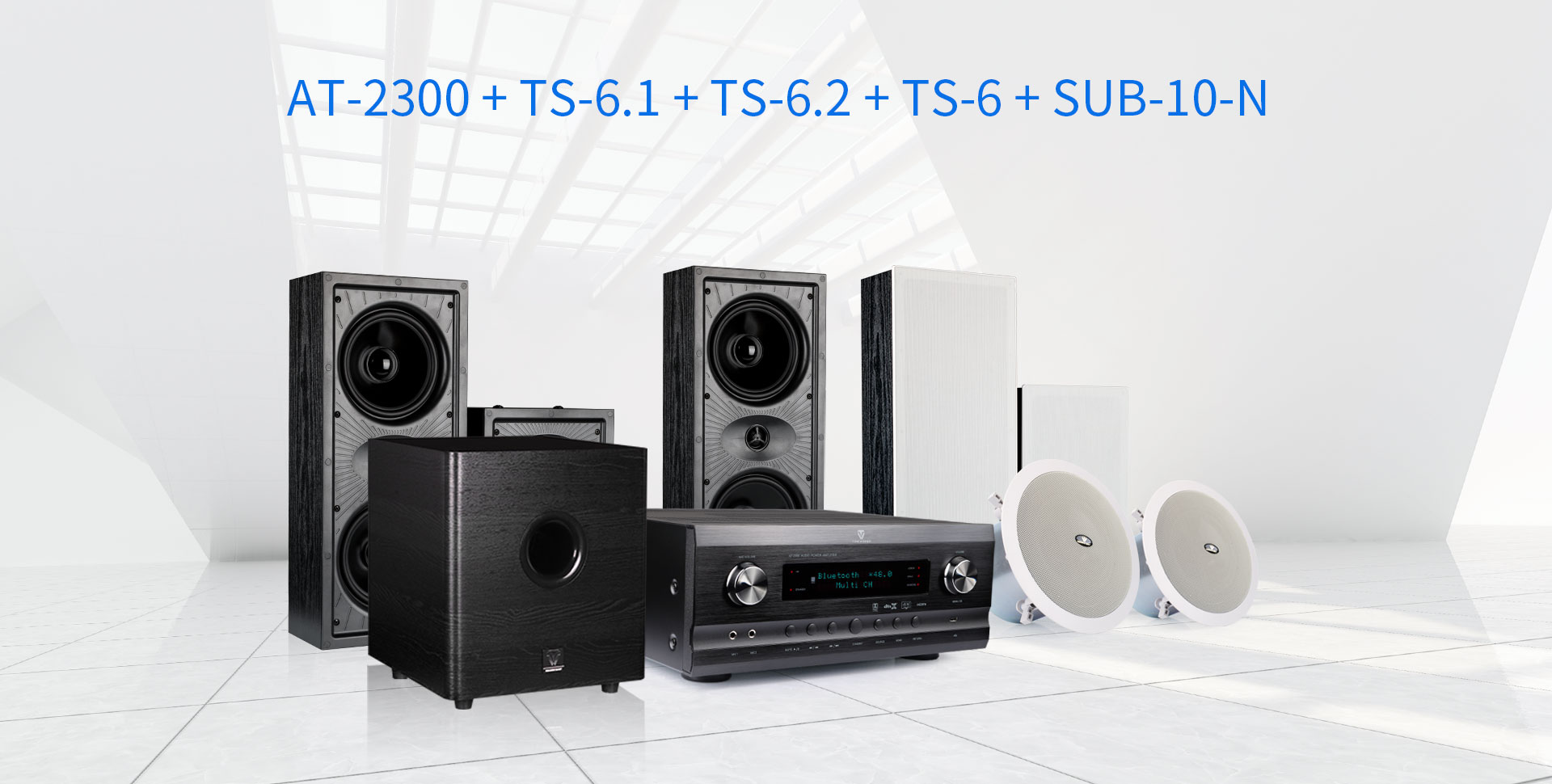How does the crossover frequency affect the performance of a home theater amplifier?
The crossover frequency is a critical setting in a home theater amplifiers with bluetooth that affects the performance of your speakers and overall sound quality. Here are some key points to consider:
What is a crossover frequency? A crossover frequency is the point at which a speaker's frequency response shifts from one driver to another. For example, in a two-way speaker, the crossover frequency is where the tweeter takes over from the woofer. In a home theater system, the crossover frequency is typically set in the preamp amplifier or receiver and is used to direct the appropriate frequencies to the appropriate speakers.

Speaker matching: The crossover frequency is important because it allows you to match the amplifier speakers. By setting the crossover frequency correctly, you can ensure that each speaker is handling the frequencies it was designed to handle, resulting in clearer, more accurate sound.
Bass management: The crossover frequency is also critical for bass management. In a home theater system, the crossover frequency is used to direct low-frequency sounds to the subwoofer, which is designed to handle these frequencies more effectively than other speakers. By setting the crossover frequency correctly, you can ensure that your subwoofer is handling the appropriate frequencies, resulting in a more balanced, dynamic sound.
Room acoustics: The crossover frequency can also affect how your system sounds in a given room. Room acoustics can impact the way sound waves interact with your speakers, and the crossover frequency can help to compensate for these interactions. For example, if your room has a lot of hard surfaces that reflect sound waves, you may need to adjust the crossover frequency to compensate for the increased presence of high-frequency sounds.
In summary, the crossover frequency is an important setting in a home theater amplifier that affects speaker matching, bass management, and room acoustics. By setting the crossover frequency correctly, you can ensure that your system sounds its best and that each speaker is handling the appropriate frequencies for optimal performance.
Sure, here are some additional points to consider regarding crossover frequency and its impact on a home theater amplifier:
Crossover slope: The crossover slope determines how quickly the signal transitions from one speaker to another at the crossover frequency. A steeper slope will result in a more abrupt transition, while a shallower slope will result in a more gradual transition. The slope can impact the sound quality and overall balance of the system.

Speaker positioning: The crossover frequency can also be affected by the physical placement of your speakers in the room. For example, if your subwoofer is located in a corner, it may produce more bass, and you may need to adjust the crossover frequency accordingly to avoid overpowering the other speakers.
Speaker size: The size of your speakers can also impact the crossover frequency. Smaller speakers may have a higher crossover frequency, while larger speakers may have a lower frequency. It's important to select speakers that are compatible with your amplifier and to adjust the crossover frequency accordingly.
Multiple crossovers: Some home theater amplifiers may have multiple crossover points to allow for more precise control over the sound. For example, you may be able to adjust the crossover frequency separately for the front, center, and rear speakers. This can be especially useful in larger rooms where you need to fine-tune the sound to ensure optimal performance.
Overall, the crossover frequency is a critical setting in a home theater amplifier that can impact speaker matching, bass management, and overall sound quality. It's important to select speakers that are compatible with your amplifier and to adjust the crossover frequency and slope to ensure optimal performance. If you're not sure how to set the crossover frequency on your home theater amplifier, consult the user manual or contact the manufacturer for assistance.